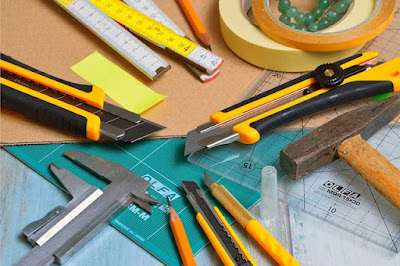Master Woodworking: A Guide to Choosing the Best Wood Types
Wood is a beautiful and versatile material, but for anyone embarking on their woodworking journey, understanding the different types of wood and their unique properties is essential. Whether you’re building simple furniture, crafting intricate decor, or pursuing a more advanced woodworking project, selecting the right wood can make or break the success of your project.
1 Types of Wood: Hardwoods vs. Softwoods
One of the first distinctions woodworkers need to understand is the difference between hardwoods and softwoods. Despite the names, these categories aren't based on the actual hardness of the wood but rather the types of trees they come from.
Hardwoods come from deciduous trees (trees that lose their leaves) and are often more durable, making them perfect for furniture and high-quality projects. Popular examples include oak, maple, and walnut.
Softwoods, on the other hand, come from coniferous trees (evergreens). They are usually less dense and easier to work with, making them ideal for beginners or large-scale projects like framing. Pine, cedar, and fir are common types of softwood.
Want to explore a variety of woodworking projects using both hardwoods and softwoods? Check out these free woodworking plans to get started!
2 How to Choose the Right Wood for Your Projects
Choosing the right wood involves understanding the requirements of your project. Here are some factors to consider when making your selection:
Durability: For outdoor projects or high-use furniture, choose durable hardwoods like oak or teak.
Workability: If you're new to woodworking, choose softer woods like pine or poplar, which are easier to cut and shape.
Cost: Wood prices can vary significantly. If you're on a budget, stick to affordable woods like pine or plywood.
Need tools to start your woodworking journey? Equip your workshop with these essential woodworking tools for all your projects.
3 Wood Properties: Grain, Texture, and Color
Wood has unique characteristics that define its appearance and workability. Understanding these properties will help you select the right wood for the aesthetic and functional goals of your project.
Grain: The grain pattern affects how wood looks and behaves. Open-grain woods like oak have prominent, porous lines, while closed-grain woods like maple have a smooth, uniform surface.
Texture: Wood can be rough or smooth. Rough textures, like that of oak, give a rustic appearance, while smooth woods like cherry or walnut offer a more refined look.
Color: Each type of wood has its own natural hue. Some woods, like cherry, darken over time, while others, like maple, retain their light appearance. Consider the natural color and how you plan to finish the piece.
Looking to start with simple but creative projects? Download these free woodworking plans to build your skills and confidence!
4 Working with Reclaimed Wood
Using reclaimed wood is a sustainable and cost-effective way to obtain beautiful, weathered materials for your projects. Reclaimed wood often comes with character, offering unique textures and rich history. It's perfect for rustic furniture, wall paneling, or decor.
If you're wondering where to get started, this guide to setting up a woodworking shop on a budget can help you organize your space and plan your projects.
5 Wood Grades and Quality
Wood is graded based on its quality, which impacts its price and how suitable it is for certain projects.
Select Grade: This is the highest quality, with minimal imperfections. It’s ideal for fine furniture and cabinetry.
Common Grades: More affordable, common grades may have knots or other imperfections but work well for structural projects or furniture that doesn’t require a flawless finish.
When you’re ready to invest in quality wood and tools, it’s important to make sure you’re selecting wisely. To make this easier, here’s a list of woodworking tools to keep your shop running smoothly.
FAQs
1. What is the difference between hardwood and softwood?
Hardwood comes from deciduous trees, while softwood comes from coniferous trees. Hardwoods are typically denser and more durable, making them ideal for furniture and flooring, whereas softwoods are lighter and easier to work with.
2. How do I choose the right wood for my woodworking project?
Consider factors like durability, workability, cost, and aesthetics. Hardwoods are best for durability, while softwoods are easier to handle for beginners. You can also reference free woodworking plans to get ideas for which wood to use.
3. Can I use reclaimed wood for woodworking?
Yes, reclaimed wood is an eco-friendly and cost-effective option. It adds character to projects but may require extra preparation. Make sure to clean and treat the wood before use.
4. What is the best type of wood for beginners?
Beginners should start with softer woods like pine or poplar, which are easier to cut, shape, and sand. These woods are also relatively affordable, making them perfect for practice projects.
5. Where can I find affordable woodworking tools?
You can find affordable tools online, including this selection of woodworking tools to get your shop fully equipped without breaking the bank.
6. What are wood grades, and why do they matter?
Wood grades determine the quality and appearance of wood. Select-grade wood has minimal imperfections and is used for high-end projects, while common-grade wood may have more knots or blemishes but works well for general construction.
Conclusion
Understanding the different types of wood, their properties, and how to choose the right one is fundamental to successful woodworking. Whether you're creating a rustic masterpiece with reclaimed wood or crafting a sleek modern design, selecting the right wood is the first step toward a high-quality finish. Be sure to download free woodworking plans and equip your shop with the best tools for your journey.
Related Articles:







.jpeg)

.jpeg)
